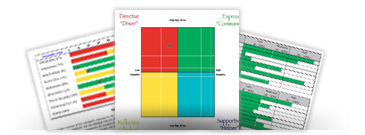Avoiding Buyer’s Remorse
Professional Sales coaching teaches a lot of valuable skills which enable a salesperson to take a prospective buyer from unfamiliarity with a product or service all the way to a successful close. The major skills in a salesperson’s repertoire include qualification, presentation, handling objections and closing, but there is another skill which should be taught as part of the sales coaching process — it’s called avoiding buyer’s remorse.
For our purposes, buyer’s remorse is a specific mental condition which might occur within seconds of making a deal, or at most, after a few days. Anything taking longer than this is not buyer’ remorse but something else, such as a valid dissatisfaction with a product after using it or finding a better deal elsewhere.
Here are a few tips to avoid this from cropping up on your deals.
What causes buyer’s remorse?
If the buyer has made a deal to acquire a high-quality item which will truly fill a need at a fair price, buyer’s remorse is simply an irrational manifestation. It is caused by fear, uncertainty and doubt, especially if the buyer has suffered through an earlier, similar transaction where things did not go well (used car deal, anyone?)
While the consultative sales process is excellent for building trust and assuaging prospects’ fears, some people just cannot help it and get nervous whenever they make any sort of decision. As such, do not take this sudden backtracking personally — unless you did the unthinkable and “unclosed” the deal by rambling on and on after the sale was closed.
Validate their decision
The first way to nip buyer’s remorse in the bud is to validate the buyer for making the decision to buy from you. Even the most hardened C-suite executive wants an assurance that he did not commit his company’s resources to the wrong vendor.
Phrases to use include:
• “I am pleased about your choice, as my experience tells me that our service helps businesses like yours reach their revenue goals very quickly.”
• “I think that you just made a great decision, and I am here to ensure everything meets or expectations during installation.”
• “Your staff is going to be pleased, and I look forward to working with them on this project.”
Schedule the next event
This next technique is also known as “locking in the sale,” as it further commits the buyer to the transaction. It is quite simple to put into action, you simply schedule the buyer for a future commitment before leaving their office.
Examples:
• “I suggest that we schedule the kick-off meeting for your people and mine early next week. Does Tuesday or Thursday work best?”
• “Our delivery people will give you a call later this afternoon to schedule delivery, what time do your prefer?
• “Let’s schedule a meeting over coffee with your partner to iron out the details of the installation.”
Locking in the sale makes backing out doubly difficult, as the buyer would have to back out of two commitments — the original agreement to buy, and the follow-up appointment.
Thank them
Finally, earnestly thanking the buyer might inspire him to push aside his second thoughts — after all, no one wants to disappoint someone who is grateful to them, right? Something as simple as “Thank you for having confidence in our company, we will not disappoint you,” followed up with a thank you note and a nominal token of your appreciation, bowl of fruit, can go a long way in avoiding buyer’s remorse.
Sales coaching to avoid buyer’s remorse can save deals from being cancelled, helping the bottom line and the morale of salespeople.



